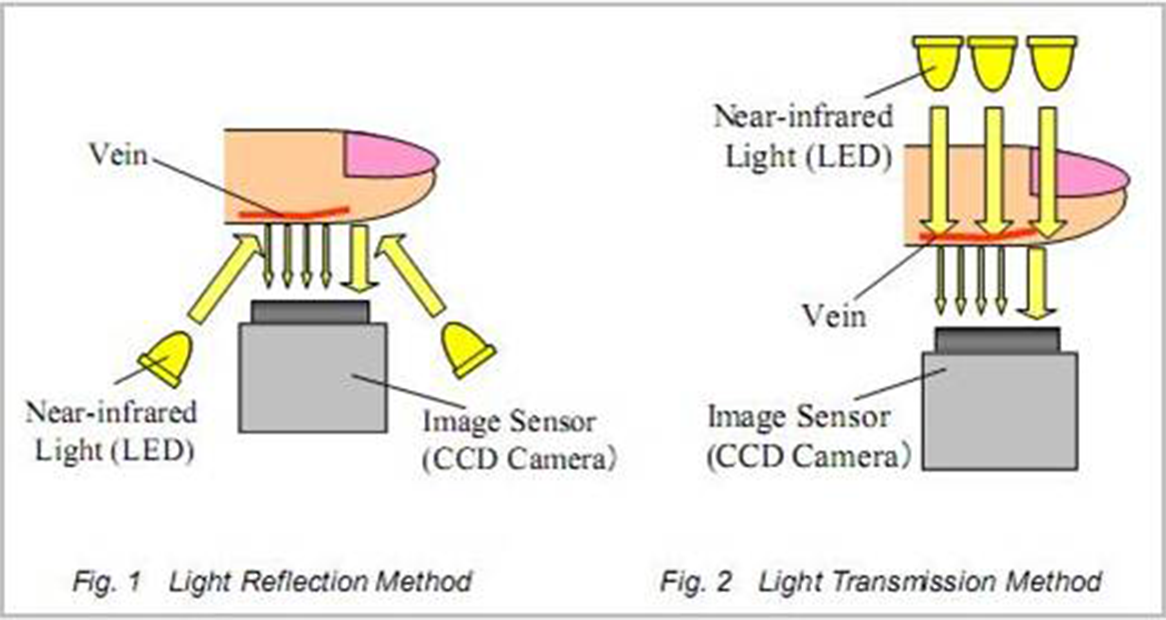Fingerprint vs Vascular biometrics – What are the differences?
Fingerprint vs Vascular biometrics – Are they different?
In biometrics, fingerprint technology is by far the most popular and widely used modality. However, due to the evolving nature of the technology, many other biometric modalities have emerged such as vascular biometrics. Even though they both share parts of the hand for identification purposes, these biometric modalities are quite different in how they work and their effectiveness in different environments. Let’s take a closer look at both and then explain the differences in detail:
Fingerprint Biometrics
Each person on the planet has a unique set of fingerprints – even identical twins do not share the exact same set of fingerprints. Fingerprint technology uses a person’s fingerprints to identify him through a process known as “fingerprint scanning.”
A fingerprint scanner system has two basic tasks –
- To obtain a raw image of your fingerprints
- The need to determine whether the fingerprint pattern matches with pre-scanned images

Specific characteristics unique to every persons fingerprint are filtered and saved from the raw images as an encrypted biometric key or mathematical representation. No image of a fingerprint is ever saved, only a series of numbers (a binary code) which is used for verification purposes. It is virtually impossible to reverse engineer the algorithm to reconstruct a raw fingerprint image, so no one can forge your fingerprints.
Vascular Biometrics
Vascular biometrics are a relatively new form of biometric authentication. It identifies an individual using the vein pattern inside one’s fingers or palms.

Vascular scanners such as a finger vein scanner or palm vein scanner utilize near infrared lights combined with a special camera to capture vein patterns. The image is then converted into an encrypted biometric key or mathematical representation and stored as a template. During authentication, the finger vein image is captured, converted again and compared against the stored template of the user.
Fingerprint vs Vascular Biometrics
Basic differences exist between these two biometric identification technologies. Today we are going to evaluate each in the following table:
| Criteria | Fingerprint Biometrics | Vascular Biometrics |
| FAR & FRR | Higher | Lower |
| Accuracy | Medium | High |
| Template Size | Small | Medium |
| Cost | Lower | Higher |
| Security | Lower | Higher |
| Long Term Stability | Lower | Higher |
| Environment Adaptability | Lower | Higher |
| Duplication Risk | Higher | Lower |
| Processing Speed | Higher | Medium |
FAR & FRR
False Acceptance (FAR) and False Rejection Rates (FRR) are lower in vascular technology compared to fingerprint technology.
False Accept (FAR) & False Reject Rates (FRR) lower in vascular #biometrics than fingerprint. Click To TweetAccuracy
Due to having lower FAR and FRR, vascular biometrics are considered a more accurate biometric modality.
Lower FAR & FRR means vascular #biometrics considered more accurate biometric modality. Click To TweetSize of Template
The size of biometric templates is smaller in fingerprint technology compared to vascular technology.
Cost
Vascular biometric technology requires a higher financial commitment compared to fingerprint.
Security Level
Because veins are located inside the body, they are extremely difficult to read or steal. There is little risk of forgery or theft.
Long Term Stability
 In the long run, a person’s fingerprint may be damaged due to environment, ethnicity, or age, however skin integrity does not affect the accuracy or readability of finger vein or palm vein authentication.
In the long run, a person’s fingerprint may be damaged due to environment, ethnicity, or age, however skin integrity does not affect the accuracy or readability of finger vein or palm vein authentication.
Environment and Weather Adaptability
Vascular biometrics are less likely to be affected by changes in the weather or physical condition (skin integrity) of the individual.
Duplication Risk
Vascular biometrics do not leave latent prints on a hardware device during the authentication process like fingerprint recognition so they cannot be duplicated or forged by “lifting.”
Processing Speed
Authentication and processing speeds are quite different between these two technologies. Fingerprint technology is better suited for a 1:N environment, whereas vein technology is better suited to 1:1 searches.
Conclusion
Fingerprint biometrics is a proven technology with low installation costs whereas vascular biometrics is a relatively new technology that is more accurate, and less susceptible to the problems that low skin integrity can cause in terms of accuracy and eligibility. With so many differences between them, only the future will tell how well these two biometric identification management technologies will perform in practice.














